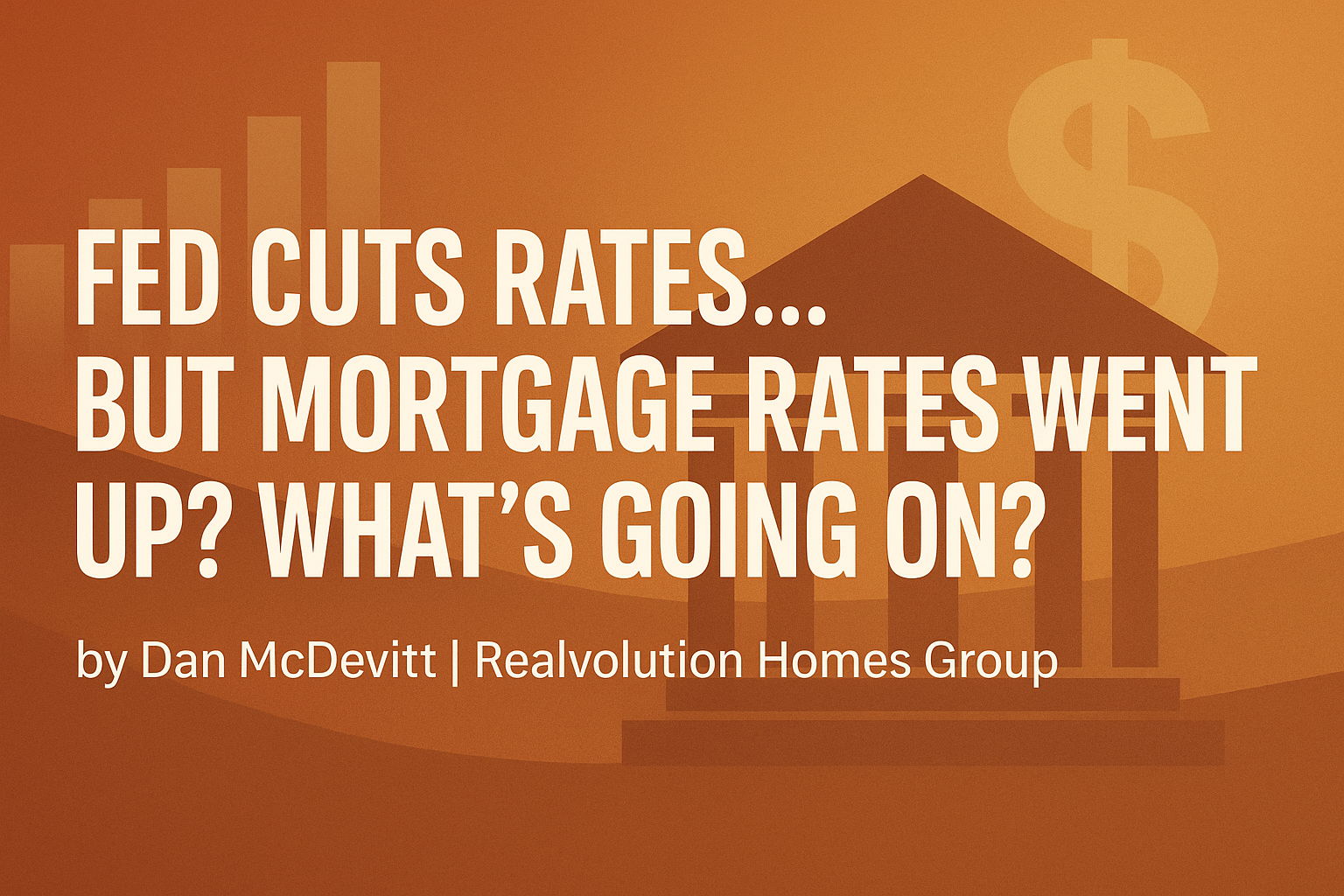Fed Cuts RatesÂ… But Mortgage Rates Went Up? WhatÂ’s Going On?

Only in 2025 could we get a “rate cut” that makes borrowing more expensive.
Yep — the Federal Reserve dropped its benchmark rate this week, and mortgage rates still went up. Let’s break down why that happened (without putting you to sleep).
The Fed Finally Cut — But Not How You Think
After months of speculation, the Federal Reserve cut its interest rate by 0.25% at its latest meeting.
That’s good news if you’ve got a HELOC or credit card, since those rates adjust quickly when the Fed moves.
But if you’re hoping that means lower mortgage rates — not so fast.
In fact, after the announcement, mortgage rates actually ticked higher.
Why Mortgage Rates Don’t Follow the Fed
Here’s the part that surprises most people:
The Fed doesn’t directly set mortgage rates.
Mortgage rates are driven by something called Mortgage-Backed Securities (MBS) — basically, big bundles of home loans that investors buy and sell.
Think of it like this:
When investors love MBS, prices go up and mortgage rates go down.
When they get nervous and start selling, prices drop and mortgage rates climb.
So while the Fed can influence the overall financial environment, the actual mortgage rate you get depends more on market sentiment — and this week, the market wasn’t feeling optimistic.
Powell’s “Hawkish” Tone Shakes Things Up
During Wednesday’s press conference, Fed Chairman Jerome Powell poured a little cold water on the optimism.
He called the idea of another rate cut in December “not a foregone conclusion — far from it.”
That one line was enough to spook investors, leading to a quick sell-off in stocks, bonds, and MBS — the very instruments that determine mortgage rates.
When those prices drop, rates go up. Simple as that.
Translation: Powell basically said, “Don’t get too comfy,” and the markets panicked like a toddler who just heard the ice cream truck isn’t coming back.
A Bright Spot: The Fed Ends “Balance Sheet Runoff”
There was some good news buried in the speech.
The Fed announced it’s ending something called “balance sheet runoff.”
Here’s the short version:
The Fed holds a massive portfolio of U.S. Treasuries and Mortgage-Backed Securities. When those mature, they normally “run off” (disappear from the books).
Now, the Fed’s saying it will reinvest that money instead — buying more Treasuries and MBS.
That creates new demand in the bond market, which usually helps push mortgage rates down.
But Then Came the Curveball
Right when markets started to relax, Powell dropped one more word that changed everything.
He said the Fed would reinvest into “Bills.”
That one word — “Bills” — told investors they’d be focusing on short-term Treasuries (less than one year).
Investors were hoping for longer-term bonds like 10- or 30-year Treasuries, which have more influence on mortgage rates.
So instead of pushing long-term rates down, that choice disappointed markets and added more fuel to the rate uptick.
The Treasury Could Still Save the Day
The wildcard here? U.S. Treasury Secretary Scott Bessent.
He can direct how much short-term vs. long-term debt the government issues.
If he focuses on more short-term Treasury bills, it could reduce the supply of long-term bonds — helping keep long-term rates (and mortgages) lower.
Basically, Powell may have rattled the markets, but the Treasury still has a few moves left to balance things out.
Dan’s Take
Look — the Fed did what everyone wanted and still managed to freak the market out.
This is the classic case of “it’s not what you do, it’s how you say it.”
The good news? We’re not in chaos. Mortgage rates didn’t spike dramatically — they just nudged up because of tone and timing.
We’re still in a market where buyers and sellers can make smart moves if they know what’s really happening behind the headlines.
If you’re waiting for mortgage rates to crash overnight… they won’t. But stability is the next best thing, and that’s where we’re heading.


